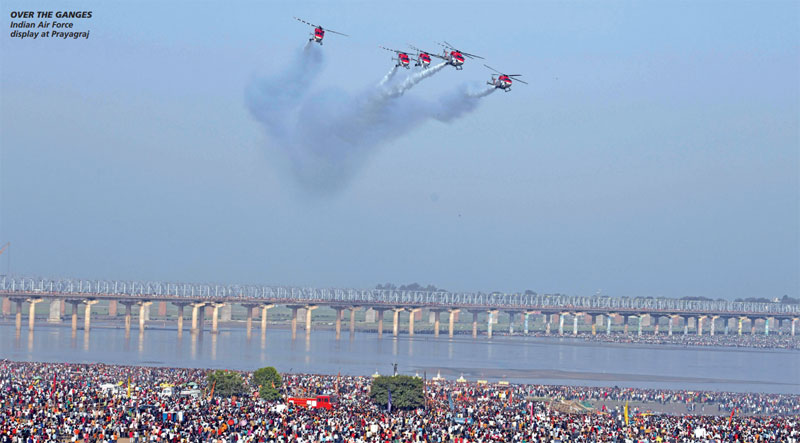The idea of Theatre Commands still needs to be fine-tuned
 Brig. Ravi Palsokar (retd)
Brig. Ravi Palsokar (retd)
Media reports suggest that the establishment of theatre commands is now a matter of implementation. It is reported that there will be three such commands, one for the western border with its headquarters based at Jaipur (Rajasthan), second for the northern China border headquartered at Lucknow (Uttar Pradesh), and the third for the defence of peninsular India along with responsibility for oceanic and island territories, which would be based at Coimbatore (Tamil Nadu).
The proposal has been in discussion for several years and a decision has been taken either in the face of bitter opposition or perhaps, having achieved a consensus. We do not know many details of the implementation of this scheme: the higher defence organisation to which the commanders in chief of such commands will report, the autonomy likely to be given to theatre commanders, their troops lists including the allocation of ever scarce air force resources. Whatever the answers to these questions, we need to examine the efficiency and thereby necessity of such theatre based, integrated unified commands in the context of the following factors.
- Will it enhance the strategic options and the operational efficiency of the armed forces as a whole, and as an instrument of national power?
- Its effect on operational doctrines not only for the defence of the national borders but also for offensive tasks beyond the borders under the shadow of the ever-present nuclear threat.
- Force modernisation and the introduction of state-of-the-art technology with a recognisable timeframe to become self-sufficient.
- Last but not the least, savings in defence expenditure, which is the need of the hour.
Strategic Options & Autonomy
Start with the basics. No country approaches such problems with a clean slate and without legacy issues. Our nation was born and immediately had to undergo a trial by fire when Pakistan launched a thinly veiled attack to regain Jammu and Kashmir. Since then, there has been a strategic stalemate along the Line of Control on the western border despite the wars of 1965, 1971 and the Kargil misadventure by Pakistan. The western international border from Punjab to the far reaches of the Rann of Kutch is more stable, but for some incidents of infiltration and smuggling. One major assault was by Pakistani terrorists from the sea into Mumbai in 2008, when lack of preparation and haphazard response allowed the terrorists to cause great depredations.

The situation on the Chinese border which stretches from Ladakh to the tri-junction with Myanmar in the east has progressively deteriorated with an uneasy standoff along the disputed border. The defeat in 1962 was bad enough but the Galwan incident of 2020 has been the turning point after which both sides have deployed the most modern weaponry and their soldiers in the most hostile of terrain and weather conditions, operating at altitudes no one had believed possible. Border outposts manned mainly to show the flag have suddenly become flashpoints with fully manned defences.
So where do we go from here?
The western border with Pakistan appears at first sight to be more manageable and the frequent terrorist attacks are dealt with appropriately. However, it is the China border which causes concern because the initiative seems to have passed to the Chinese and our troops are mostly reacting to local ingresses. This may be an unfair comment but twice before, at Nathu La in 1967 and at Sumdorong Chu in Arunachal in 1987, our troops have successfully prevented Chinese incursions. But these were followed by the Doklam incident where chains of soldiers with linked arms stood eyeball to eyeball in all types of weather to prevent the other coming forward—strange warfare this! However, note that these are piecemeal responses and do not suggest an overall policy. Also note that all this is happening as India-China trade continues to increase, more to the benefit of the Chinese, despite selective sanctions in sectors such as telecom and the banning of certain imports.
The Covid interregnum has brought in another dimension. Though this is behind us, its effects on the Chinese economy and trade policy have been considerable. Why this has happened is a separate subject, but Chinese manufacturing has been hit as some of the major manufacturers using Chinese facilities have chosen to redeploy outside that country, in countries such as Vietnam and India. What we have is adverse Chinese economic factors affecting the military situation on our borders, in an unpredictable manner. What sense would the Lucknow-based commander in chief make of a provocation on the border in his area of extensive responsibility? He would have to react at every level—tactical, operational, strategic and in the diplomatic sphere with coordination with the ministries of defence, external affairs, commerce and so on. The point is straightforward, if it is going to be business as usual with only military response as his responsibility, then he and his headquarters would not be needed at all. The whole purpose of a unified theatre is to centralise decision making at a level which comprises all levels of military and civil coordination. If this does not happen, then it is just adding a bureaucratic layer to decision making. The purpose of such integration must be laid out for it to be effective.
Recollect that the Doklam incident began when a young brigadier showing presence of mind and a sense of duty, stood physically in front of a Chinese dozer preventing it from moving ahead. Once the crisis began, the Kolkata-based army commander had to check with Army Headquarters as to how far he could go in the use of force. The events as they unfolded, suggest that armed force was ruled out at the highest level. Similarly, the unpublished memoir of a former chief (which has had excerpts leaked) suggests that in another incident of ingress in Ladakh, the buck was passed back to him at the highest level; and he in turn, was in constant touch with the Udhampur-based Command Headquarters, as to the action to be taken. Where is the autonomy of action in both these cases, if Delhi is going to decide on the level and scale of response? When theatre commands become operational, they should not have to look over their shoulders—that is the raison d’être of their formation. If this sounds convoluted, it is. We need more information to achieve clarity; just establishing such commands would serve no purpose otherwise.
You must be logged in to view this content.

